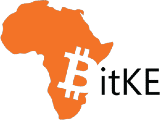There is an increasing demand for the U.S. dollar as the world moves into a global recession amid the coronavirus pandemic and despite efforts by world governments to alleviate the problem.
Apparently, the demand for dollars is huge.
On Thursday, the Fed said it would extend currency swap lines to nine more countries — on top of the five relationships it already has — in an attempt to keep dollars flowing to banks around the world.
SEE ALSO: Bitcoin was the Best Investment of the Decade, Says Bank of America Securities Report
The coronavirus pandemic has caused major turmoil in global markets as investors grow more concerned about its economic effects and dump stocks and other more risky assets in favour of the dollar.
The dollar had recently hit a three-year high against the euro while also rising to a 30-year high against the pound.
The wild 8% move in the dollar in little over a week against some of the world’s largest fiat currencies has also prompted market talk of a possible intervention by G-7 governments to bring down the dollar.
According to CNBC:
Just like consumers started a run on toilet paper, companies and institutions all over the world have created a shortage of dollars, as some players hoard more of the currency than they immediately need in response to fears about the coronavirus.
In times of trouble, all sorts of companies, banks and investors want to hold dollars. It is the world’s reserve currency and considered the safest.
Investors have been selling financial assets around the world and that has been fueling even more demand for dollars and has been sending currencies lower. The selling has also snowballed, triggering even more asset sales, and more need for dollars.
Over the past few days, we have witnessed what can be described as a meltdown in several fiat currencies, as measured against the U.S. dollar. Among these is the euro, the Australian dollar, the Canadian dollar, and many smaller currencies such as the Norwegian krone, which have all seen historic sell-offs against the U.S. dollar.
In order to quench the business world’s thirst, the U.S. Federal Reserve has opened $60 billion new swap lines with central banks in Australia, South Korea, Brazil and Mexico, among others, to help them deliver dollar funding to institutions in their regions.
Earlier the Fed had already slashed rates to near zero and enacted many of the programs developed during the 2008 financial crisis.
Follow us on Twitter for latest posts and updates
Open a Paxful Bitcoin Trading Account today!












